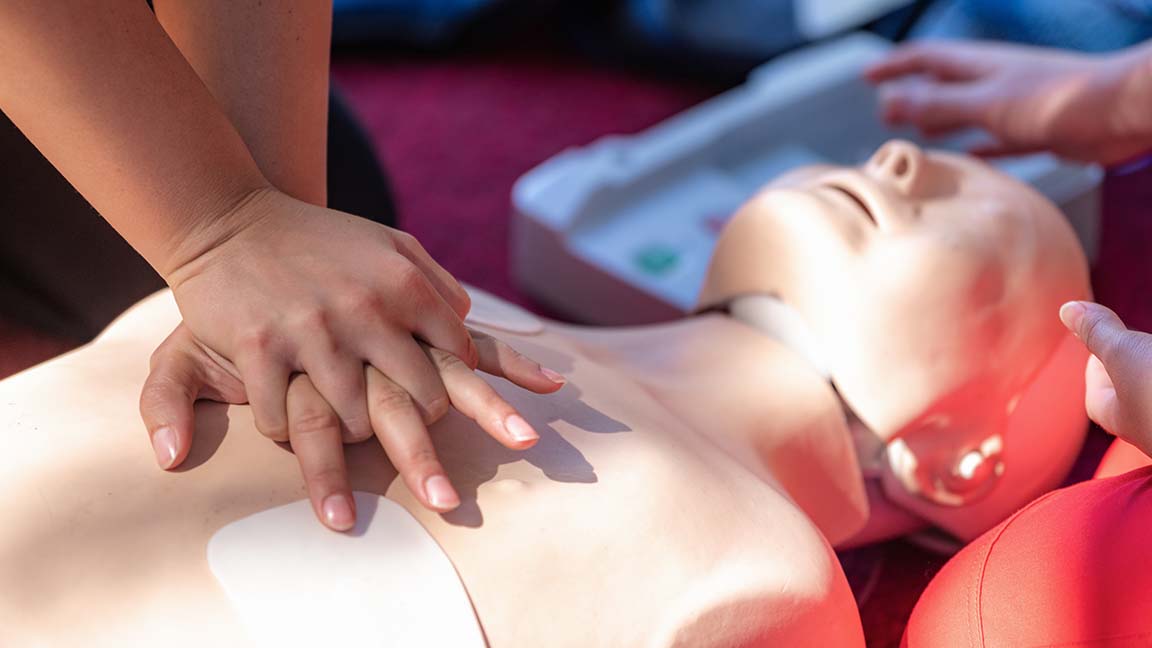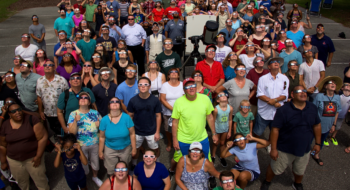Being trained to perform CPR offers life-saving skills, but knowing when to use them requires a quick assessment and a willingness to jump into action.
CPR can help save someone who has stopped breathing, has no heartbeat and is unresponsive, says Layne Woodward, a registered nurse clinical care manager at Tidelands Health community health resources and a Heartsaver CPR instructor.
Tidelands Health, in partnership with the YMCA of Coastal Carolina, offers regular Heartsaver CPR classes. The four-hour course is designed for everyday people and teaches basic pediatric and adult CPR, how to respond to choking, basic first aid and how to use an automated external defibrillator (AED).
“Of course, you don’t want to provide CPR to someone who doesn’t need it,” Woodward says. “But for someone who needs it, they’re not going to be able to tell you they need it. You’ll need to quickly make that determination and take action.”
Life-saving skills
CPR can double or triple a person’s chance of surviving a cardiac arrest if performed promptly.
“Anyone can learn how to perform it effectively so long as they have the strength to perform compressions, which the vast majority of people do,” Woodward explains. “One of the biggest fears people have about CPR is that you’ll hurt the person, but not starting CPR on someone who needs it could cost that person their life.”
Cardiac arrest is not the same as a heart attack, which occurs when blood flow to the heart is blocked. A person having a heart attack can still talk and breathe and does not need CPR, although they do need immediate emergency medical attention. Heart attack increases the risk for cardiac arrest.
First steps
If someone is experiencing cardiac arrest due to drowning, choking, a medical condition or some other reason, the first step is to call 911. CPR is meant to help keep blood flowing to the brain until emergency services can arrive and take over. CPR is not appropriate when the person is still breathing regularly, responds to verbal or physical calls for attention or still has a pulse.
Individuals who aren’t trained to provide CPR or are concerned about providing rescue breathing may be able to administer hands-only CPR, a type of CPR that requires rapid chest compressions without rescue breathing. However, conventional CPR with rescue breathing is still recommended.
Local training available
Receiving Heartsaver CPR training, which teaches conventional CPR, can increase a person’s awareness and self-confidence in case they need to perform the procedure. Individuals who participate in the class are taught to recognize when someone needs medical help and learn how to effectively use an AED, which is commonly available in buildings throughout the community.
Enjoying this story? It’s free to republish. Learn more.
“People who are trained in CPR are more likely to look for an AED whenever they’re out in the public,” Woodward says. “And even if you don’t feel comfortable performing CPR in an emergency, you can at least be the one to go get the AED. So, you’re helping in some capacity.”
Tidelands Health has partnered with the YMCA to offer Heartsaver CPR classes. The cost is $65. Call (843) 520-8586 for more information or register online for the next class.





